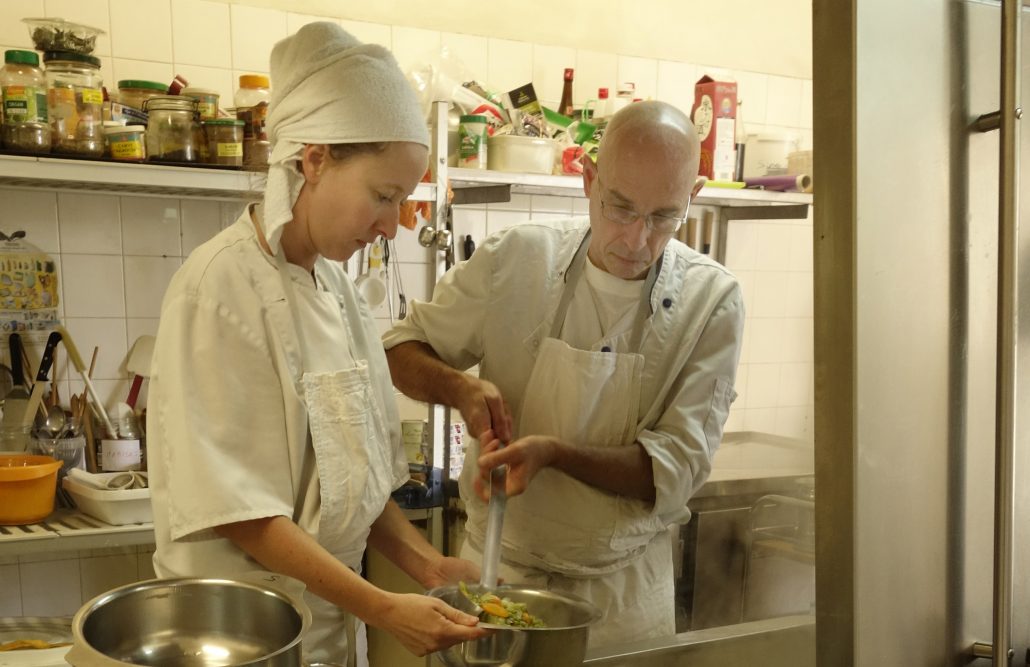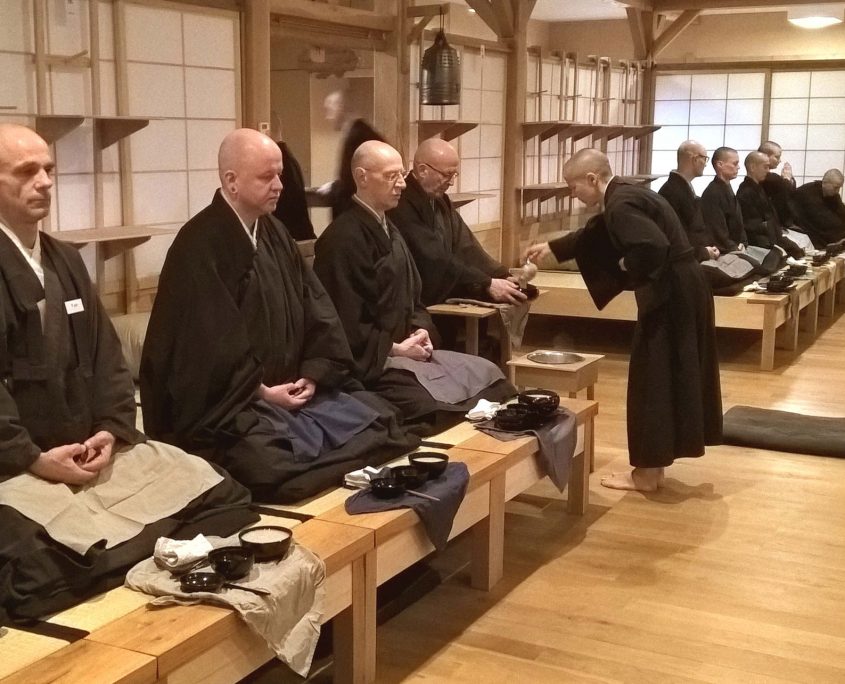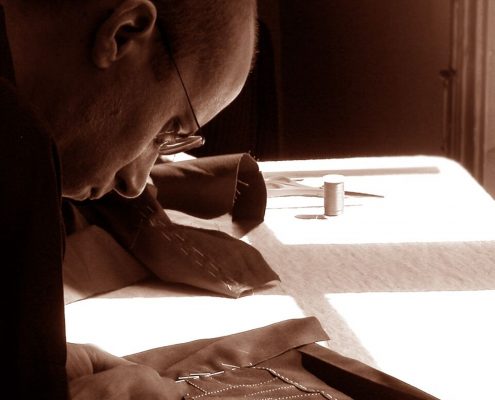What is Sôtô Zen ?
Even though life is paradise, we live as if it were hell.
Our own mind is responsible for our dissatisfactions and our sufferings.
Zen goes straight to the root, proposing to cleanse our mind of all forms of delusion.
Through the practice of zazen, Shakyamuni Buddha became the first to clarify his mind and awaken to reality as it is.
This practice is central in our school.
Zazen mind is then carried into the ceremonies, and the rituals, until it finds its way into our everyday life.
Acting from a fresh and freed mind gives strength, lightness and fearlessness to our lives.
Zen admires bold actions, finds satisfaction in a simple life, and prizes right observance of rituals and etiquette.
Kohô Chisan
Zazen, meditation without object
Perfectly balanced and still, pushing the ground with the knees, the spine stretched towards the sky, leaning neither forward nor backward. Moment after moment, we simply erase all unnecessary tensions in the body, all intentions in the mind.
It is through this practice that Shakyamuni became Buddha.
In the peaceful posture of awakening, from silence and stillness, naturally, unconsciously, we give freedom to all things. Giving freedom to our thoughts means not to move before them… Consciousness then opens into infinity.
That is how Buddha’s wisdom and compassion can manifest within us.
Zazen is the mother of all postures. Through the practice of zazen, we can learn how to live and love all existences.
Ceremonies create a bond between participants and realise the harmonious unity of the Sangha*.
After zazen, the ceremony is dedicated to the buddhas, the patriarchs and all beings. That is how we express our gratitude and return the merits of our practice to the universe.
Samu :
Samu is selfless activity performed daily in the monastery: cooking, cleaning, gardening, washing up, etc. The practice of samu brings zazen mind into our everyday activities.
Master Dogen considers that everyday life is the field of awakening.
In the Tenzo Kyokun chapter of the Eiheishingi, Master Dôgen writes:
When you cook, do not look at ordinary things with your ordinary eyes, with ordinary thoughts and sentiments.Read more
Turning this vegetable leaf between your fingers, erect a splendid abode for Buddha and let this tiny speckle of dust expound his Law. […] Never alter your mind based on the object’s quality. If your mind depends on things, it is as if you changed your attitude and speech based on the status of whomever you meet: such a behaviour is not that of a Way-practicing person.
The practice of cleanliness:
At Kanshoji, in keeping with tradition, there is a time set aside in the morning to wash our face, and in the evening to shower.
In the Senmen chapter of the Shobogenzo, Washing the face, Master Dogen writes:
According to non-dualistic thought, it is nonsensical to claim that the mind is pure, if the body is left covered with grime.Read more
Purifying the body is not just a matter of hygiene. When we wash our body and our face, we also and more importantly wash our mind.
In the Senjo chapter, « Purification », he writes:
Water is not originally impure or originally pure. The body is not originally impure or originally pure. The myriad existences are also like this.
To purify is to correctly transmit the body-mind of the buddhas and the patriarchs, being intimate with their body-mind.Read moreWhen you want to go to the toilet, you should prepare ahead of time. Do not just show up, or go with haste. When you wash your hands with water, pray that all existences will receive the wondrous hands with which to receive and retain the Buddha Dharma. People who dwell in the Way of the buddhas and the patriarchs always embody with this dignified behaviour. It is the everyday life of the myriad patriarchs.
How to receive and eat food:
In a buddhist monastery, meals are taken in silence. Present to ourselves and to the reality around us, we harmonise ourselves with each orher. Receiving and taking meals is a spiritual practice.
Our gratitude goes to those who prepared this gift.
Let us reflect on our practice and virtues, are they worthy of this offering?
Let us keep our mind in the normal condition, free from envy and greed.
Let us take this meal to sustain our life and health.
Let us take this food for the sake of the wondrous awakening.Read moreAbiding in this ephemeral world, like a lotus flower in muddy water, our mind is pure and we transcend this world, thus honouring the much revered Buddha.
(Excerpts of the Meal Sutra)
Kesa sewing:
The kesa, originally the Buddha’s garment, symbolises transmission. We receive it during the Way-entering ceremony and when we are ordained a monk or nun.
Kesa sewing follows very strict rules, dating back to Buddha’s time. Generally, we sew it ourselves during sewing sessions.
It is a group practice which requires silence and concentration.
At Kanshoji, we sew during weekends devoted to this practice, as well as during monthly retreats (sesshin). Sewing is also part of our regular activities at the monastery
In Sôtô Zen, the teachings are transmitted from person to person.
At Kanshoji, they are given by Taiun Jean-Pierre Faure, who received the Dharma transmission from Dônin Minamisawa Zenji.
Even if each era rewrites the teaching, it remains based on that of the founding fathers and the patriarchs. At Kanshoji, it is delivered in the various traditional Sôtô zen forms (see below). Apart from the abbot’s teachings, we are educated by the sangha in every activity performed together: ceremonies, meals, samu, daily life, kesa sewing…
All the teachings are translated into English.




